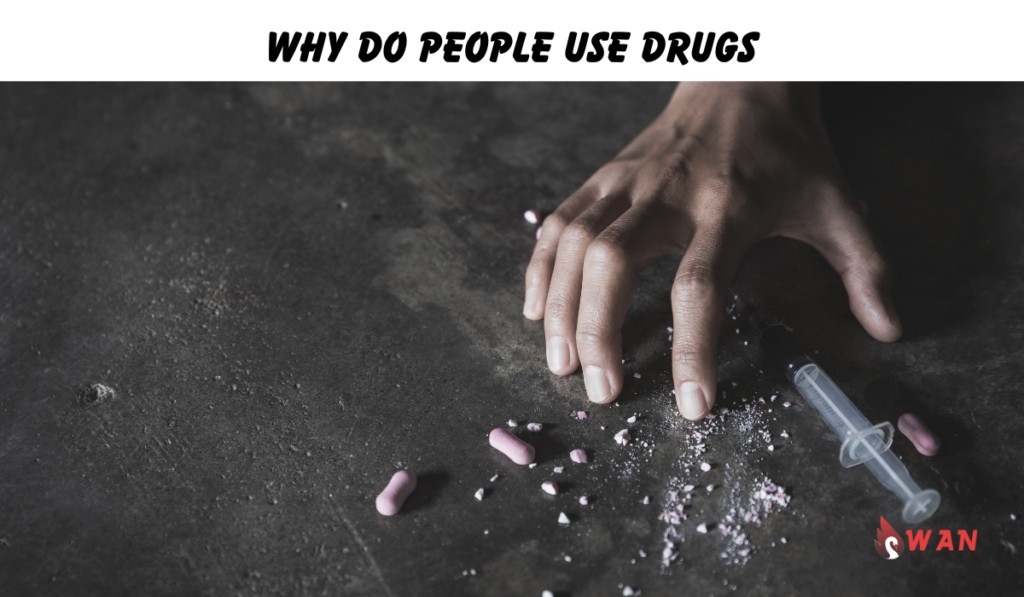Substance abuse has been a prevalent issue in society for decades, with millions of people around the world struggling with addiction. Despite the efforts of law enforcement agencies, healthcare professionals, and addiction treatment centers, the problem persists, and many individuals continue to suffer the devastating consequences of drug abuse.
Understanding the Root Causes of Substance Abuse
Substance abuse is a multifaceted issue that is influenced by various biological, psychological, social, and environmental factors. It is crucial to recognize that there is no one-size-fits-all answer to why people use drugs. It is often a combination of factors that contribute to this behavior. Let’s explore some of the key factors in detail:
- Biological Factors: Research has shown that genetics can play a significant role in an individual’s propensity to use drugs. Some individuals may have a genetic predisposition to addiction, making them more susceptible to substance abuse. Additionally, imbalances in brain chemistry, such as deficiencies in dopamine or serotonin, can also influence drug use behavior.
- Psychological Factors: Mental health conditions, such as anxiety, depression, or trauma, can contribute to the development of substance abuse. Individuals may turn to drugs as a way to self-medicate or cope with emotional pain. Furthermore, personality traits such as impulsivity, sensation-seeking, and low self-esteem can also influence drug use behavior.
- Social Factors: Social and environmental factors, such as peer pressure, societal norms, and cultural influences, can also impact drug use behavior. Individuals may feel compelled to use drugs to fit in with a particular group or to escape social isolation or discrimination. Furthermore, environmental factors such as availability and accessibility of drugs can also influence drug use patterns.
- Environmental Factors: Childhood experiences, family dynamics, and traumatic events can also shape an individual’s propensity to use drugs. Adverse childhood experiences, such as abuse, neglect, or dysfunctional family dynamics, can increase the risk of substance abuse later in life. Additionally, exposure to stressful life events, such as divorce, loss of a loved one, or financial difficulties, can also trigger drug use behavior as a coping mechanism.
The Cycle of Substance Abuse: Understanding the Vicious Cycle
Substance abuse, whether it be drugs or alcohol, can often follow a cycle that is difficult to break free from. It’s important to understand the intricacies of this cycle in order to better comprehend the challenges that individuals struggling with addiction face. In this article, we will delve into the different stages of the cycle of substance abuse and shed light on how it perpetuates the vicious cycle of addiction.
Stage 1: Initiation
The initiation stage marks the beginning of the cycle, where an individual is first introduced to a substance. This can occur through various means such as curiosity, peer pressure, or self-medication for physical or emotional pain. The initial use of the substance may provide a sense of pleasure, escape from reality, or relief from distress, creating a positive association in the individual’s mind.
Stage 2: Regular Use
After the initiation stage, regular use of the substance may begin. The individual may find themselves increasingly dependent on the substance to cope with stress, negative emotions, or to experience the pleasurable effects. The regular use of the substance may also lead to increased tolerance, where larger amounts are needed to achieve the desired effects. At this stage, the individual may start to prioritize obtaining and using the substance over other important aspects of their life, such as relationships, work, and hobbies.
Stage 3: Dependence
As regular use continues, dependence on the substance may develop. This stage is characterized by the individual experiencing withdrawal symptoms when they attempt to reduce or stop their substance use. Withdrawal symptoms can vary depending on the substance used and may include physical symptoms such as nausea, sweating, tremors, as well as psychological symptoms like anxiety, depression, and irritability. The fear of withdrawal can become a driving force for continued substance use, further perpetuating the cycle of addiction.
Stage 4: Addiction
The addiction stage is marked by a loss of control over substance use. The individual may continue to use the substance despite experiencing negative consequences, such as deteriorating physical health, strained relationships, financial difficulties, legal issues, and loss of employment or educational opportunities. The individual’s brain chemistry may also be altered, leading to compulsive drug-seeking behavior and a diminished ability to make rational decisions. The individual may experience a constant craving for the substance and may prioritize obtaining and using it above all else, including their own well-being.
Stage 5: Consequences
As the addiction progresses, the consequences of substance abuse become more severe. The individual may face serious health risks, such as organ damage, infectious diseases, and mental health disorders. Relationships with family, friends, and other social connections may deteriorate, leading to social isolation and loneliness. The individual may face legal repercussions, such as arrests and imprisonment, and may experience financial ruin due to the high cost of maintaining their addiction. The consequences of substance abuse can have a profound impact on all aspects of an individual’s life and contribute to the perpetuation of the vicious cycle of addiction.
Breaking the Cycle: Recovery and Rehabilitation
Breaking free from the cycle of substance abuse can be challenging, but it is possible with the right support and resources. Recovery and rehabilitation programs can provide individuals with the tools, therapies, and support needed to overcome addiction and rebuild their lives. Treatment options may include detoxification, counseling, therapy, support groups, and medication-assisted treatment, among others. It’s important to note that recovery is a lifelong journey that requires ongoing commitment, effort, and support.
Conclusion
In conclusion, the reasons why people use drugs are multifaceted and complex. It often involves a combination of factors such as the urge to escape from reality, the brain’s response to pleasurable sensations, peer pressure and social influences, mental health issues, environmental and genetic factors, the role of trauma, and societal stigma. It is important to understand that addiction is not a moral failing, but a complex medical condition that requires compassionate and evidence-based approaches to treatment.
Addressing the underlying factors that contribute to drug use, providing access to comprehensive and affordable addiction treatment programs, reducing societal stigma, and increasing awareness about the risks and consequences of drug use are essential in addressing the ongoing drug crisis. This includes promoting education, prevention, and early intervention efforts, as well as providing support and resources for individuals struggling with addiction and their families.
It is crucial to approach drug addiction with empathy, understanding, and evidence-based interventions, and to prioritize public health approaches that focus on prevention, harm reduction, and access to treatment. By addressing the root causes of drug addiction and providing support and resources for those affected, we can work towards reducing the impact of drug addiction on individuals, families, and communities, and ultimately improving public health outcomes.
Learn more articles related to lifestyle at keeswan.com.





